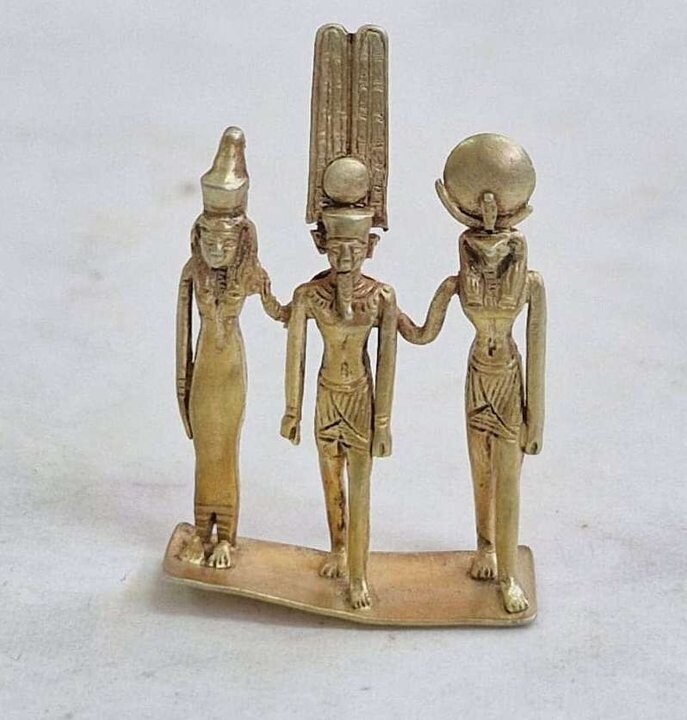
A collection of gold and gemstone jewelry and amulets, dating back to the beginning of the 26th Dynasty (664-525 BC), one of the key stages of late Egypt, was discovered in the northwest sector of the Karnak temples. The Egyptian Ministry of Tourism and Antiquities confirmed the finding by the archaeological mission of the Franco-Egyptian Center for Karnak Temple Studies (CFEETK).
The discovery took place during excavations conducted by the archaeological mission in the northern area of the Karnak complex, one of the most important religious sites in ancient Egypt. Archaeologists found a small broken but complete ceramic container that contained a set of jewelry pieces in excellent condition.
Among the recovered items are several gold rings and other precious metals, small statuettes, and golden amulets, including a rare triptych of the Theban triad formed by the deities Amun, Mut, and Khonsu. Metallic brooches and amulets representing gods in animal forms were also found, along with a large number of decorative beads, some of which are gold-plated.
The Egyptian Minister of Tourism and Antiquities, Sherif Fathy, emphasized the importance of this discovery and praised the cooperation between Egypt and France in the archaeological field. He stated that the recovered objects will allow researchers to gain a clearer understanding of religious life and the use of amulets and jewelry in Egyptian society during the 26th Dynasty.
The archaeological team, led by Abdel Ghaffar Wagdy, General Director of Antiquities in Luxor and head of the mission on behalf of Egypt, has begun restoration and documentation work on the pieces found. Each new discovery, like this collection of jewelry and amulets, allows for a more precise reconstruction of the splendor of ancient Egypt and a better understanding of its religious and cultural practices.
All these initiatives aim not only to preserve historical heritage but also to make the Karnak complex an even more attractive destination for national and international visitors.
For his part, the Secretary General of the Supreme Council of Antiquities, Mohamed Ismail Khaled, highlighted that this finding contributes to expanding knowledge about the temple and its evolution throughout the first millennium BC. Additionally, he emphasized that "this excavation is part of a broader project aimed at enhancing the tourist experience in Karnak, one of the most visited temple complexes in the country."
As part of this development plan, the tourist routes have been modernized, a new lighting system has been installed, and the restoration and reinstallation of the sanctuary of Amenhotep I in the open-air museum of the site have been carried out.
It is expected that once this process is completed, the objects will be exhibited in the Luxor Museum, where visitors will be able to appreciate their historical and artistic value. From the French side, the mission director, Jérémie Hourdin, explained that the work in the northern area of Karnak has revealed large adobe structures that were likely used as storage or workshops related to temple activities.
According to experts, these constructions also date back to the 26th Dynasty and provide valuable clues about the organization and functioning of the complex at that time. The Karnak temples continue to be an inexhaustible source of archaeological discoveries. Their vast expanse and the richness of their history have made this site a key reference point for world Egyptology.













